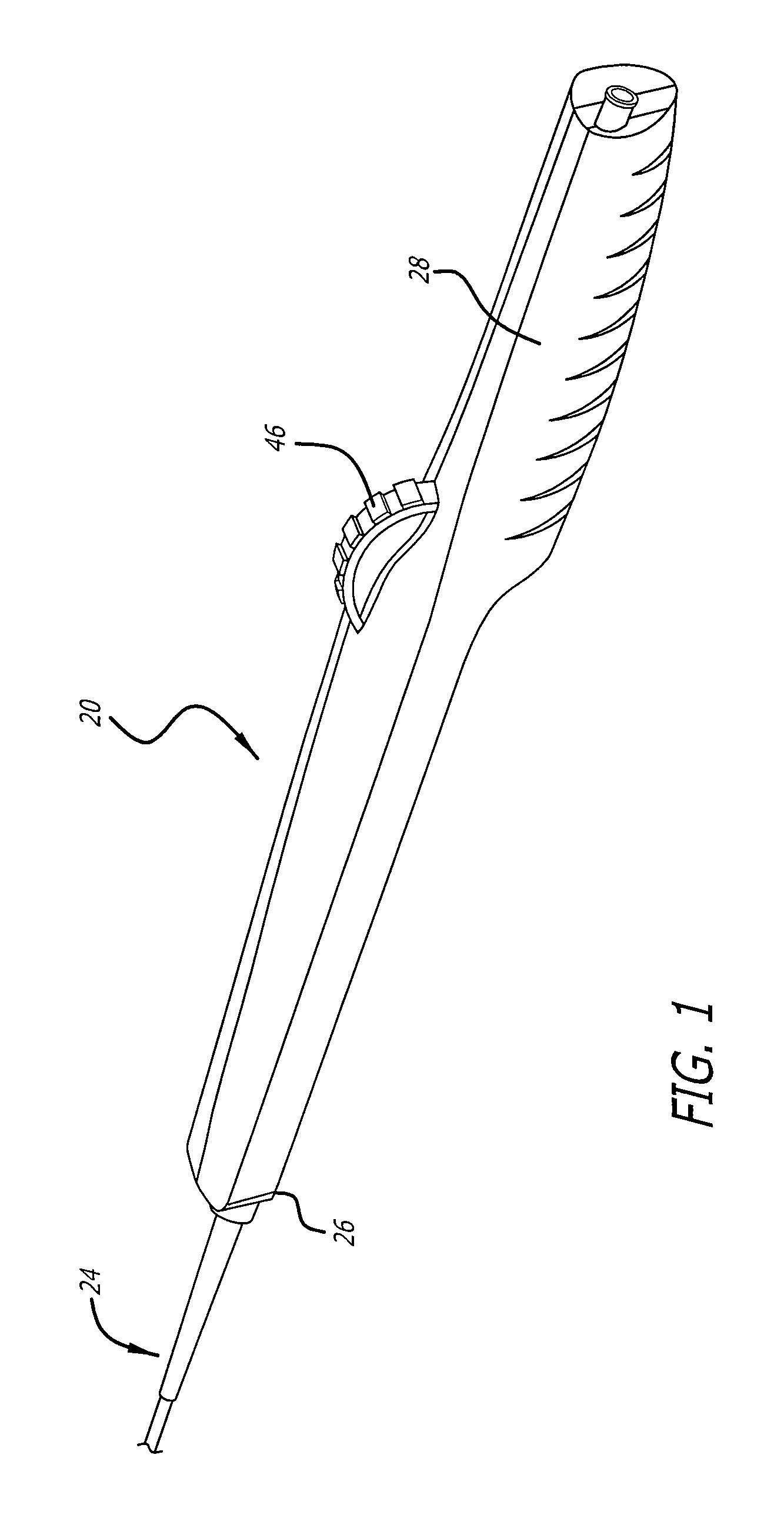Delivery system with variable delivery rate for deploying a medical device
a delivery system and medical device technology, applied in the field of medical device delivery systems and methods, can solve the problems of long stents that often require additional deployment time, and the delivery system usually requires a slower and more controlled deployment rate, so as to achieve fast transformation, high torque, and the effect of rapid deploymen
- Summary
- Abstract
- Description
- Claims
- Application Information
AI Technical Summary
Benefits of technology
Problems solved by technology
Method used
Image
Examples
Embodiment Construction
[0041]The present invention relates to a system that delivers and deploys a medical device at a target site within a patient's body, such as a body lumen. For illustration purposes, the following exemplary embodiments are directed to a system for delivering and deploying a self-expanding stent, although it is understood that the present invention is applicable to other medical devices which are implantable in a body lumen as well as other parts of the body. Additionally, the medical device can be either self-expanding or a non self-expanding (balloon expandable). If the stent is balloon expandable, then a balloon catheter would be used to expand the stent at the target location.
[0042]Referring now to FIGS. 1-6, a delivery system 20 with a handle assembly 22 embodying features of the present invention is illustrated. The delivery system includes a catheter portion 24 coupled to the distal end 26 of the handle assembly 22. The handle assembly 22 is generally elongate and includes a gr...
PUM
 Login to View More
Login to View More Abstract
Description
Claims
Application Information
 Login to View More
Login to View More - R&D
- Intellectual Property
- Life Sciences
- Materials
- Tech Scout
- Unparalleled Data Quality
- Higher Quality Content
- 60% Fewer Hallucinations
Browse by: Latest US Patents, China's latest patents, Technical Efficacy Thesaurus, Application Domain, Technology Topic, Popular Technical Reports.
© 2025 PatSnap. All rights reserved.Legal|Privacy policy|Modern Slavery Act Transparency Statement|Sitemap|About US| Contact US: help@patsnap.com



